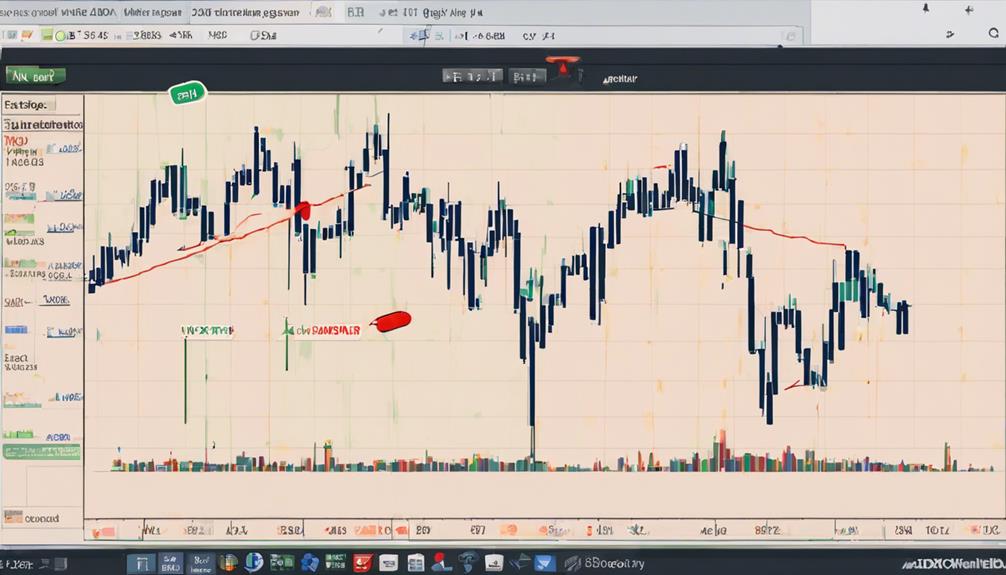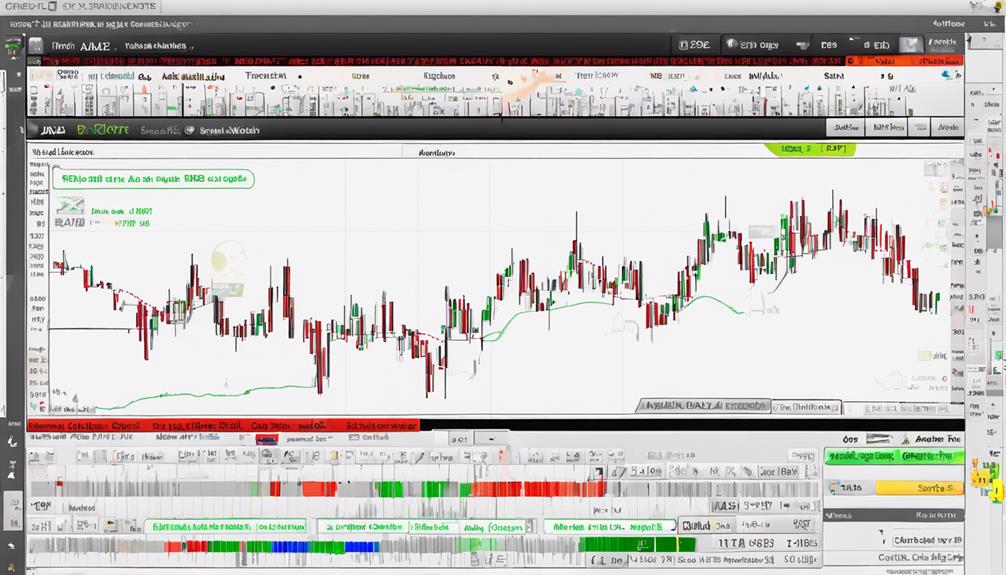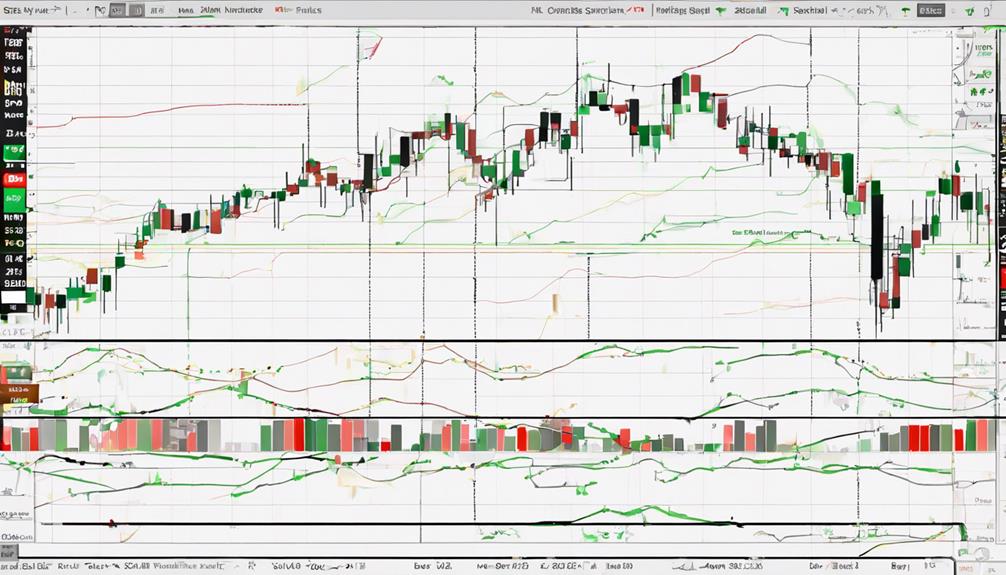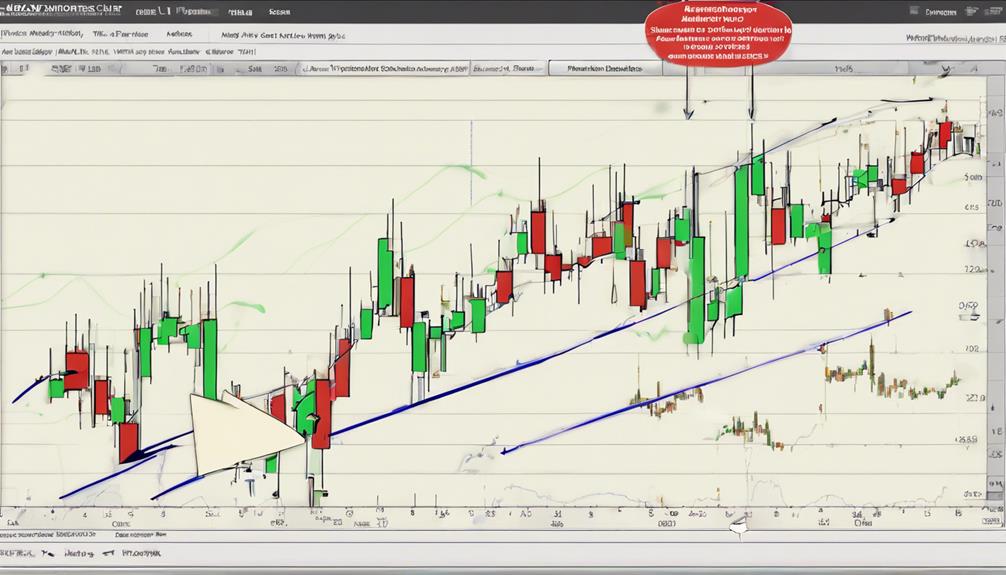The ADX indicator stands as a pivotal element in the realm of trading, offering a precise quantification of trend strength. Its numerical range furnishes traders with a means to assess the vigor of market movements, enabling the crafting of informed strategies.
The ADX's distinctive feature of neutrality allows for a focused analysis on trend momentum, presenting traders with a compass to navigate the complexities of market dynamics. As traders tap into the ADX's potential for confirming breakouts and spotting trend reversals, a deeper exploration into its multifaceted utility unfolds, shedding light on its indispensable role in shaping trading decisions.
Understanding ADX Calculation
In dissecting the intricacies of the ADX calculation, one delves into a meticulous process of smoothing true range values to ascertain the robustness of a prevailing trend. The Average Directional Index (ADX) is a widely used index that quantifies the strength of a trend in price action. ADX calculations incorporate Wilder's smoothing technique, which aids in reducing market noise and providing a clearer picture of the strength of the trend.
By combining directional movement information and price range data, the ADX line generates a comprehensive indicator of trend strength. The ADX reading is crucial for traders and analysts as it helps in understanding the stability and sustainability of a trend. This index plays a vital role in technical analysis, offering insights into the underlying strength of a particular trend.
Understanding the ADX calculation is fundamental for interpreting the strength of trends in the financial markets accurately.
Interpreting ADX Readings

Analyzing ADX readings provides traders with valuable insights into the strength and potential sustainability of prevailing trends in price action. The ADX Indicator, a key tool in technical analysis, helps traders determine trend direction and assess trend momentum.
ADX readings above 25 suggest a strong trend, making them suitable for trend-trading strategies. On the other hand, values between 0-25 indicate weak or absent trends in the market. Additionally, ADX values ranging from 25-100 signify varying levels of trend strength, with higher values indicating more robust trends.
When the ADX is low, it may signal accumulation or distribution phases before the emergence of a trend. Traders often rely on the ADX to understand price changes and make informed decisions based on the prevailing market conditions.
Leveraging ADX for Trading Signals

Utilizing the ADX indicator strategically can provide traders with valuable insights into trend strength and potential trading opportunities. ADX does not specify the direction of the trend but focuses on its strength. Readings above 20-25 typically indicate a trending market, making it suitable for trend trading strategies.
When ADX rises, it signals increasing trend strength, while a falling ADX suggests a weakening trend. Traders often use ADX to confirm the validity and sustainability of breakouts, assisting in determining entry and exit points.
To enhance trading strategies, combining ADX with other indicators such as the Relative Strength Index (RSI) or Moving Average Convergence Divergence (MACD) can provide additional confirmation signals for making informed decisions.
Enhancing Analysis With ADX

Enhancing market analysis through the application of the ADX indicator offers traders a quantitative measure of trend strength within a given price range. ADX measures the strength of a trend using the green line, red line, and Directional Movement Index (DMI) lines.
This indicator is used to measure the strength of a price trend, providing traders with crucial insights into potential price moves. By analyzing the ADX values, traders can gauge the momentum behind a trend and anticipate potential trend changes. ADX values above 25 typically suggest strong trends, making them suitable for trend-trading strategies.
The direction of the ADX line, along with its peaks, signifies shifts in trend strength, helping traders identify breakout opportunities. Understanding ADX not only enhances analysis but also aids in confirming the sustainability of a trend post-breakout. By incorporating ADX into their analytical toolkit, traders can make more informed decisions based on the underlying momentum and strength of market trends.
ADX Strategies for Market Success

Strategically incorporating ADX into trading methodologies can significantly enhance market success by providing valuable insights into trend strength and potential price movements. ADX, known as one of the best directional indicators, helps traders gauge whether a trend is strong enough to warrant trading.
A key point to note is that ADX readings above 25 indicate a trending market, signaling suitable conditions for trend-following strategies. Additionally, breakouts accompanied by high ADX values have a higher probability of leading to sustained price movements, making them attractive entry points for traders.
Why is the ADX Indicator Considered Essential in Trading?
The ADX Indicator is essential in trading because it helps to measure the strength of a trend. This allows traders to make more informed decisions about when to enter or exit a trade. By providing valuable insights into market conditions, the ADX Indicator is a valuable tool for traders. That’s why use ADX Indicator.
Frequently Asked Questions
Why Is the ADX Indicator Important?
The ADX indicator is crucial for traders as it quantifies trend strength, aiding in identifying suitable trends for trading strategies. Rising ADX indicates a strengthening trend, crucial for confirming breakout validity and sustainability in trading.
What Is the Secret of ADX Indicator?
The secret of the ADX indicator lies in its unique ability to quantify trend strength objectively, free from directional bias. By measuring the intensity of price movements, ADX assists traders in identifying robust trends crucial for strategic decision-making.
Is ADX Indicator Accurate?
The ADX indicator's accuracy stems from its quantification of trend strength without specifying direction. Traders often rely on ADX values above 25 for identifying robust trends. Its ability to confirm momentum aids in trend identification and breakout opportunities.
Is ADX a Leading or Lagging Indicator?
The ADX indicator is a lagging indicator, relying on past price data to determine trend strength. It confirms trends that have already started, rather than predicting future price movements. Traders often use it in conjunction with leading indicators for comprehensive analysis.
Conclusion
In conclusion, the ADX indicator stands as a beacon of trend strength in the vast sea of market fluctuations. Its numerical values guide traders towards informed decisions, highlighting the ebb and flow of market momentum.
Like a lighthouse guiding ships through turbulent waters, the ADX illuminates the path to successful trading strategies. Embracing its insights empowers traders to navigate the complexities of the market with clarity and precision.
